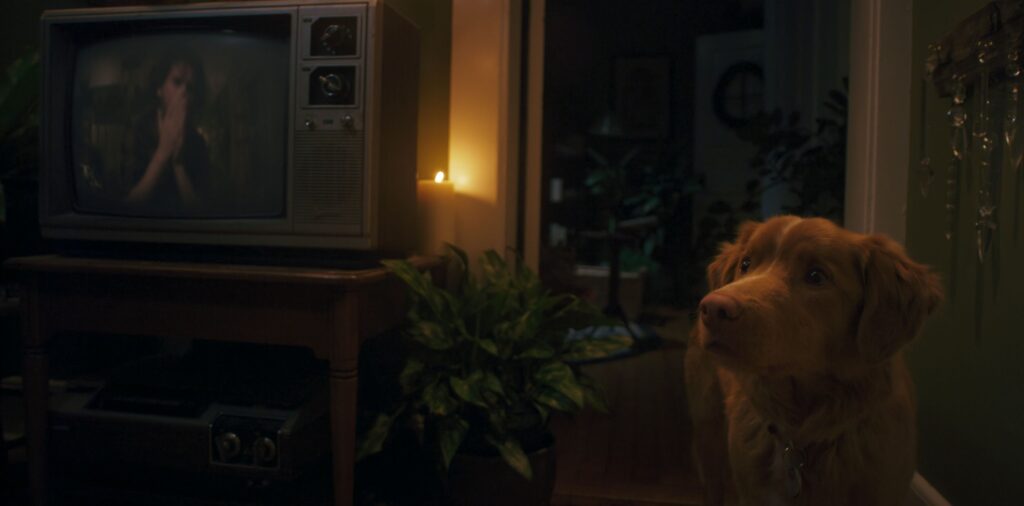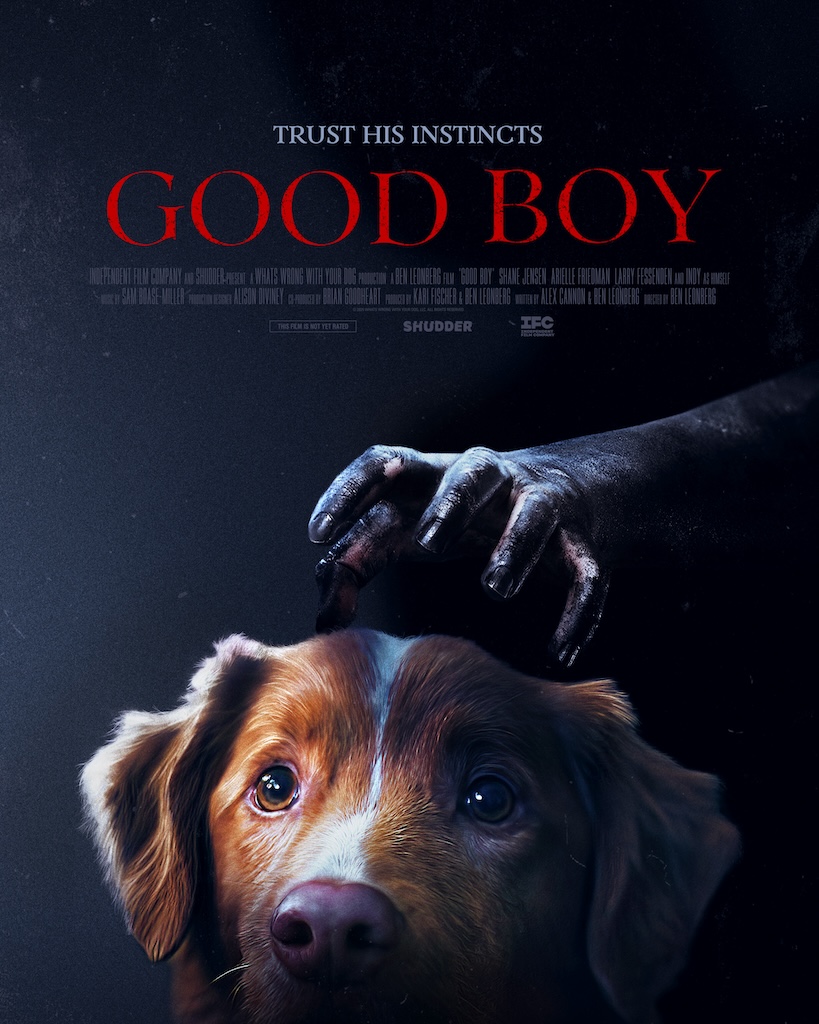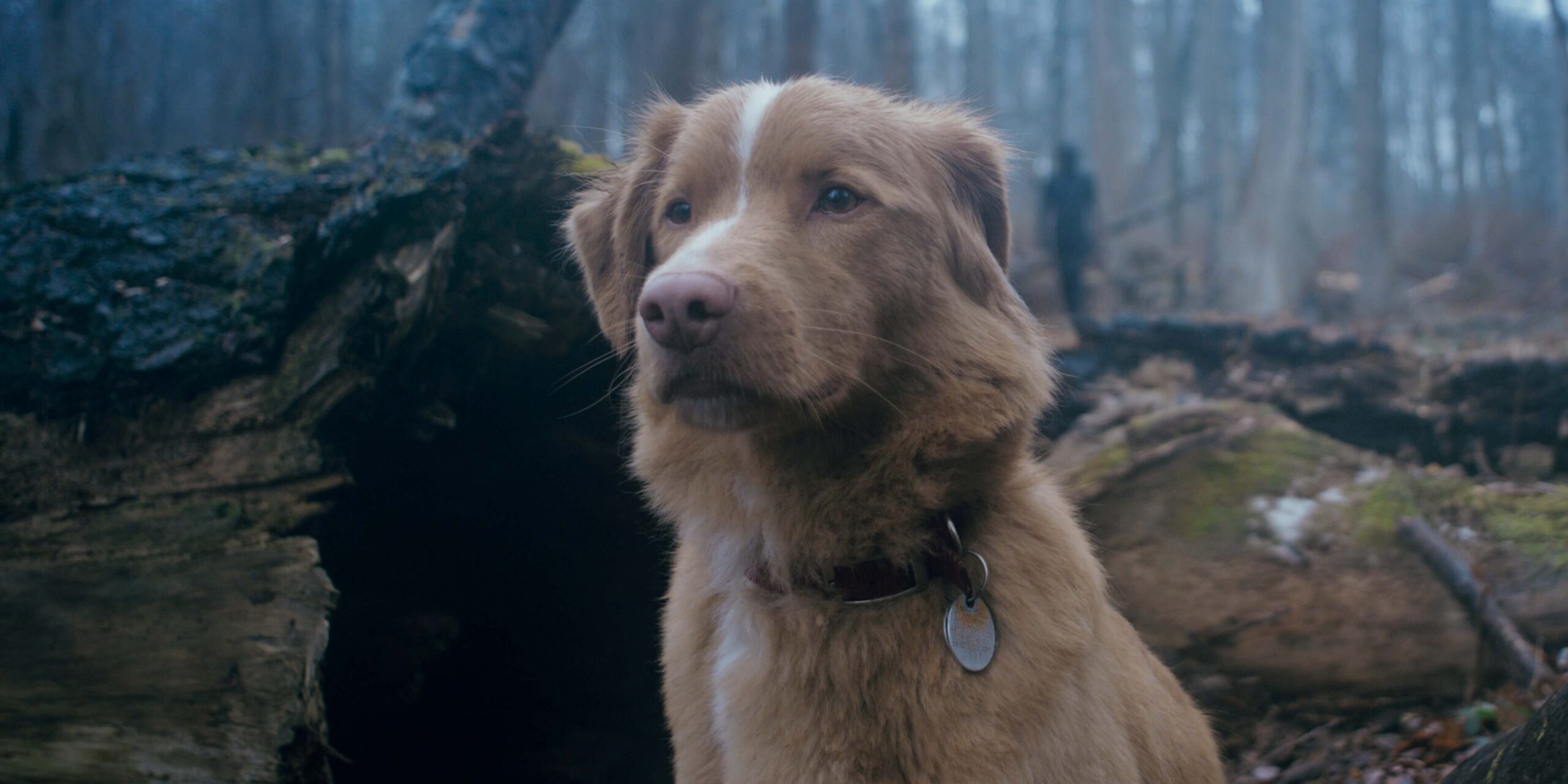by Cyn’s Corner
I know the burning question on everyone’s mind about this movie: does the dog live? I’ll answer that soon but first let’s talk about the film itself. “Good Boy” was originally intended for a limited theatrical release, but after the trailer generated so much buzz (racking up more than a million views), IFC expanded it to a wide release (on October 3rd) ahead of its streaming debut on Shudder.
“Good Boy” is directed (and co-written) by Ben Leonberg. The dog featured in the film is actually his own, and the entire story is told from the perspective of this dog, Indy. (Yes, like Indiana Jones — and there’s even a little clip of Indiana Jones shown on a TV in the background as a playful nod.)
When I first heard the premise of this movie, I was reminded of a mid-90s werewolf film called “Bad Moon,” starring Mariel Hemingway and Michael Paré. That film wasn’t fully told from the dog’s perspective, but the dog was crucial to the story, sensing danger and reacting to it. “Good Boy” takes that idea even further by grounding everything entirely in the dog’s viewpoint. It’s a short film — about 72 minutes long — but interestingly, it sometimes feels longer than its runtime. The production reportedly took around three years to complete, and much of that was due to working with Indy’s natural rhythms and reactions. He wasn’t trained to “act” in the way you’d expect an animal actor might be. Instead, his performance was coaxed out through noises, treats, and positioning. Knowing that made me appreciate his authenticity even more. He’s not performing tricks for the camera; he’s just reacting the way a dog would in these eerie circumstances.

The story begins with Indy’s owner moving into his late grandfather’s abandoned house deep in the countryside. The man is dealing with serious health issues — heavily implied to be cancer — and he’s seeking a change of scenery after treatment. His sister worries about him and checks in often, but once he and Indy arrive at the property, it’s the dog who first senses something wrong. From the start, Indy notices oddities: subtle noises, strange movements, unsettling atmospheres. He doesn’t bark or go wild at every moment; instead, he reacts the way dogs often do — with subtle body language, tilted ears, quiet whines, and a cautious stare.
The haunting presence in the house is ambiguous. Through old VHS tapes of the grandfather, we learn that a similar phenomenon plagued him and his own dog. But what exactly is it? A ghost? A malevolent spirit? Something that possesses? The movie never provides full clarity. At first, this ambiguity frustrated me because I wanted answers. But as I thought about it more, I realized that not knowing makes sense. Since this is told from Indy’s perspective, I don’t think we’re supposed to fully understand. He doesn’t know what’s happening; he just knows it’s frightening. That choice ultimately makes the film more immersive, even if it leaves you puzzled.
There are several strengths here. The unique point of view is refreshing in the horror genre. Watching Indy’s authentic, untrained reactions adds realism you can’t fake. The emotional pull is also undeniable — audiences naturally fear for the dog’s safety, and that connection is powerful. I read that after the trailer dropped, online searches about whether the dog dies skyrocketed. My own daughter even said she wouldn’t watch it if the dog didn’t make it. It’s an understandable sentiment. Dogs, like small children, are innocent and helpless in the face of something they don’t comprehend, which heightens the stakes for viewers.
The film also delivers strong atmosphere. The house is creepy, filled with shadows, strange noises, and a basement that radiates menace. At times Indy experiences dreams or visions, showing us flashes of past horrors before he snaps awake. Those sequences surprised me and added another eerie layer. I also loved the authenticity of the dog’s behavior — the loyalty, the way he waits by the window for his owner all day, the confusion and hurt on his face when his owner lashes out in anger, and when he hides under the bed in fear during one scene. These touches ground the film emotionally.
That said, there are some flaws. Despite being a short film, certain shots linger too long, which hurts the pacing. There are stretches of repetition, with the camera holding on Indy or empty rooms while we wait for something to happen. The darkness, while thematically justified (the house seems to be powered by a generator), is sometimes overwhelming. Even after adjusting my screen, there were moments when I could barely see what was going on, and occasionally even Indy himself was swallowed by shadows. Finally, while the ambiguity of what’s going on with the house/property works from one perspective, some viewers may still feel unsatisfied by the lack of answers.
As for the characters, Indy’s owner is a little frustrating. Horror often leans on characters making questionable decisions, and here the sister repeatedly tries to warn him, while his dog clearly shows distress. Yet he ignores both. By the end, he seems faintly aware of the danger, but not enough to act. While I could rationalize some of his behavior — especially since much of the story is filtered through Indy’s perception — I still found myself wishing he had paid more attention.

Indy, on the other hand, is much easier to forgive. Horror fans are used to yelling at human characters for wandering into dark basements or ignoring obvious red flags, but a dog doesn’t think that way. His instincts tell him something is wrong, but he can’t process it like a person would, nor can he escape the situation on his own. That helplessness makes his curious but cautious behavior feel natural rather than frustrating. In fact, the film’s tension often comes from the realism of Indy’s reactions — because they’re the exact responses we’d expect from a dog trapped in a situation he can’t fully understand.
Now, for the question you’ve all been waiting for: does the dog die? I’ll give the spoiler because I know it matters to many of you. No, Indy does not die. If that concern has been holding you back, you can rest assured the film spares him.
Overall, “Good Boy” is an innovative and memorable indie horror film. Its originality and emotional resonance outweigh the minor flaws in pacing, darkness, and clarity. The dedication behind its production, the use of an untrained dog as the central perspective, and the genuine emotional stakes all make it stand out in a crowded genre. It’s not perfect, but it’s a film I’ll be thinking about for a while — and one I’m glad I saw.
Rating: 8/10




